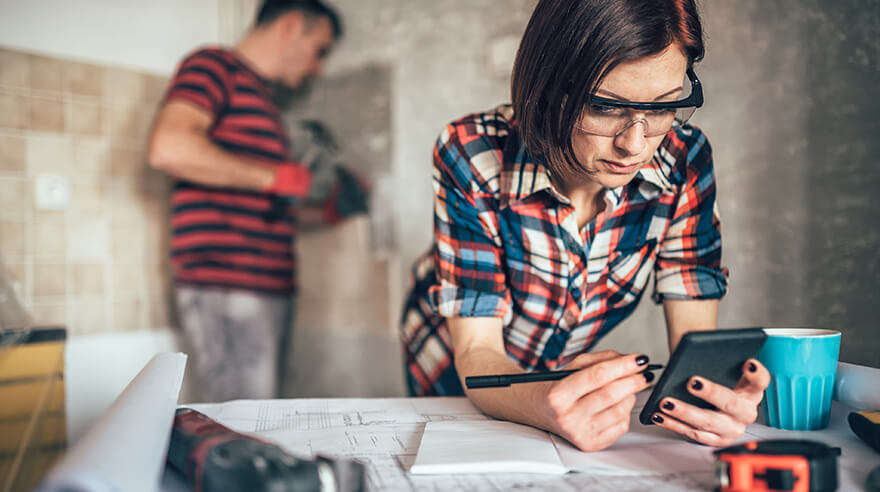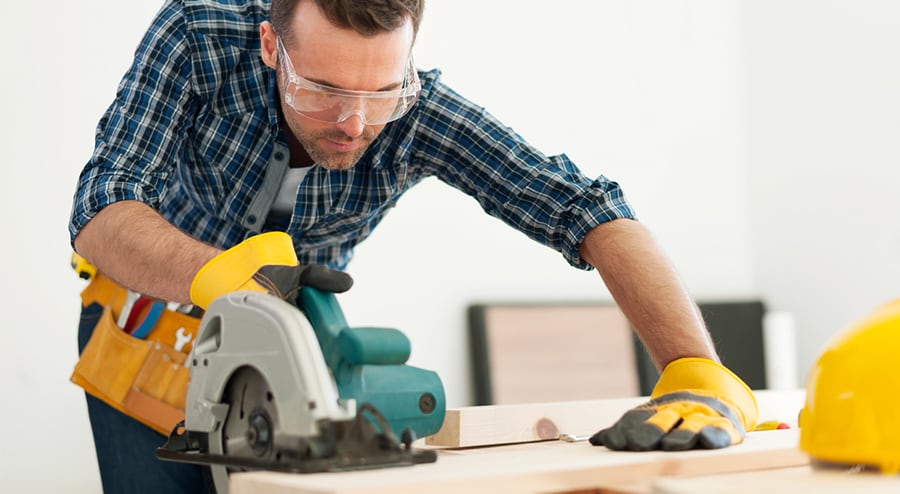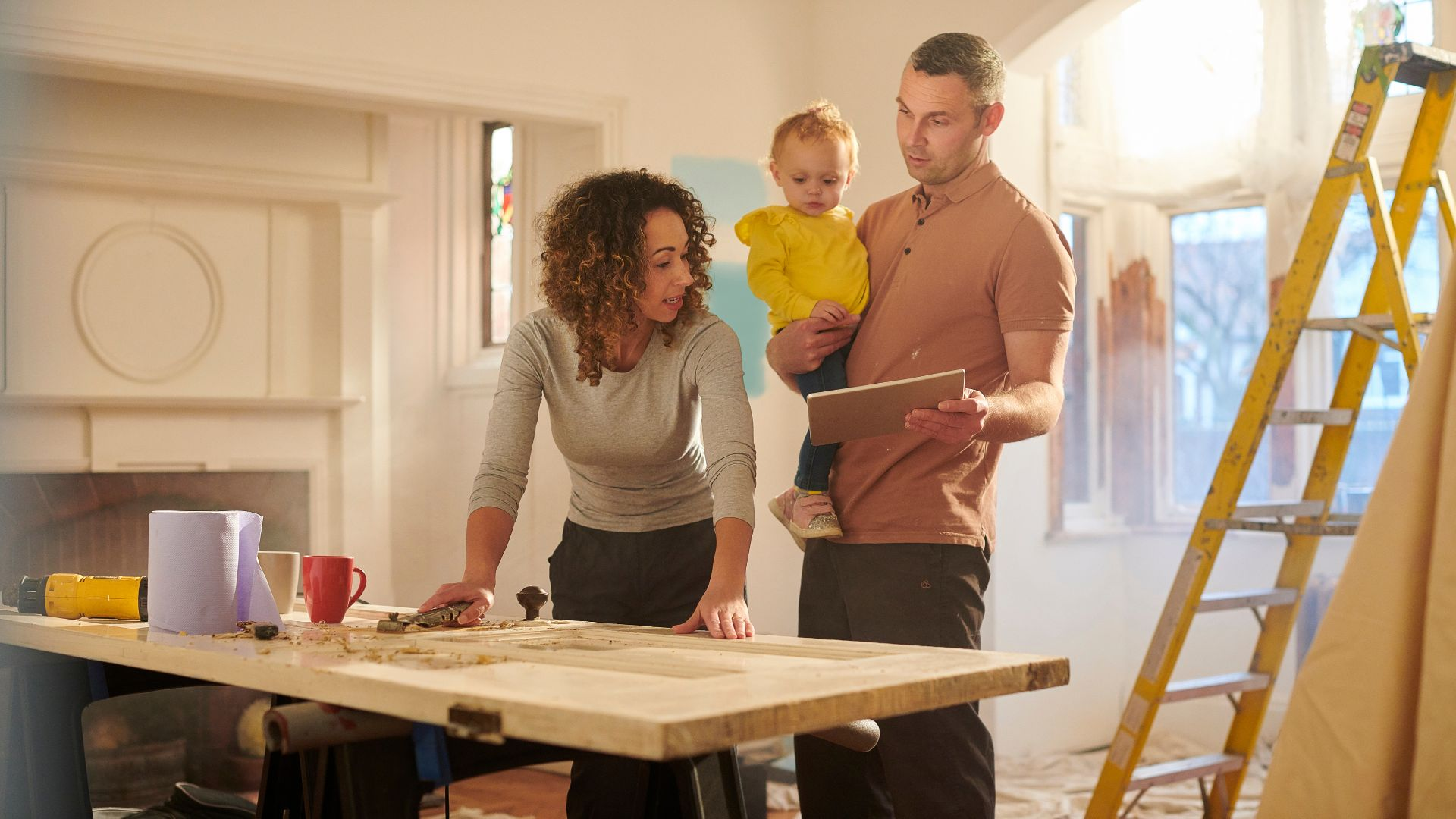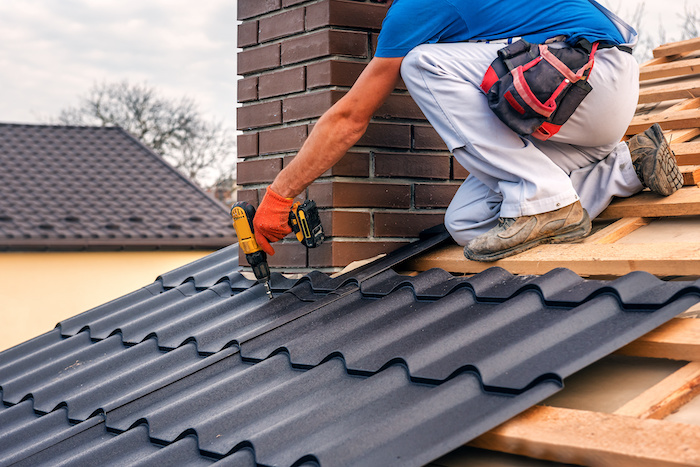Stay informed about the latest home renovation safety tips in 2023. Technology and techniques evolve, and staying up-to-date can prevent accidents. Online resources, books, and local hardware stores can provide valuable insights.

3. Assess Your Skill Level
Honesty is key here. Evaluate your proficiency and experience in the specific DIY task at hand. If you’re unsure, consider taking a class or seeking guidance from a professional.
Safety Gear Is Non-Negotiable
4. Wear Appropriate Clothing
When engaging in DIY house improvement, dressing appropriately is vital. Loose clothing can get caught in machinery, so opt for fitted attire. Safety goggles, gloves, and a dust mask are often necessary.
5. Utilize Hearing Protection
Some DIY tasks can generate excessive noise. Protect your hearing with earmuffs or earplugs, especially when using power tools.

6. Respiratory Protection
When working with materials like paint, insulation, or chemicals, wear a respirator to guard against inhalation of harmful fumes or particles.
Tools and Equipment
7. Maintain Your Tools
Before using any tools, ensure they are in good working condition. Dull blades and malfunctioning equipment can lead to accidents. Regularly inspect, clean, and lubricate your tools.
8. Choose the Right Tools
Selecting the appropriate tools for your DIY project is crucial. Using the wrong tool can not only lead to mistakes but also compromise your safety. Familiarize yourself with the tools and their proper usage.
9. Power Tool Safety
If power tools are involved, make sure to read the manufacturer’s instructions carefully. Use them with caution, keep cords away from your work area, and unplug them when not in use.
Workspace Safety
10. Clear the Workspace
A cluttered workspace is an accident waiting to happen. Keep your area tidy by removing any obstacles, tripping hazards, or unnecessary items.
11. Adequate Lighting
Ensure you have sufficient lighting to see your work. Inadequate lighting can lead to mistakes and accidents.
12. Ventilation
Proper ventilation is essential, especially when working with materials that emit fumes or dust. Open windows or use fans to maintain air quality.
Electrical Safety
13. Turn Off Power
When working on electrical components, always turn off the power to the area you’re working in. Use a voltage tester to ensure circuits are de-energized.
14. Extension Cord Safety
Inspect extension cords for damage before use, and never overload them. Use cords suitable for outdoor or indoor use as needed.
15. Ground Fault Circuit Interrupters (GFCIs)
Install GFCIs in areas where water is present, such as kitchens and bathrooms. These devices can prevent electrical shocks.
Ladder Safety
16. Choose the Right Ladder
Ensure you use an appropriate ladder for the task. Extension ladders are best for outdoor work, while step ladders are suitable for indoor projects.
17. Proper Placement
Place the ladder on a stable, level surface. Avoid propping it up on uneven ground or unstable objects.
18. Three-Point Contact
Maintain three points of contact with the ladder at all times: two feet and one hand or two hands and one foot.
Fire Safety
19. Fire Extinguishers
Have fire extinguishers readily available in your workspace, and make sure you know how to use them.
20. Emergency Exits
Identify and keep emergency exits clear. In case of a fire or any other emergency, a clear path can be a lifesaver.
Chemical Safety
21. Read Labels
When working with chemicals, read labels carefully and follow instructions. Use them in a well-ventilated area and wear appropriate protective gear.
22. Proper Storage
Store chemicals in their original containers in a cool, dry place away from children and pets. Never mix different chemicals unless directed.
First Aid
23. First Aid Kit
Always have a well-stocked first aid kit on hand. It should include bandages, antiseptic wipes, scissors, and any necessary medications.
24. Emergency Contacts
Keep a list of emergency contacts, including poison control, nearby. In case of accidents, quick access to help is crucial.
Stay Informed and Prepared
25. Know Your Limits
While DIY projects can be incredibly satisfying, recognize when a task is beyond your expertise. Don’t hesitate to seek professional help for complex or hazardous projects.
26. Stay Informed
Stay updated with the latest safety guidelines for DIY projects. Join online forums, attend workshops, and network with fellow DIY enthusiasts to exchange knowledge.
Conclusion: DIY Home Improvement Safety Tips 2023
DIY home improvement safety tips 2023 can be a rewarding endeavor, but it should always be accompanied by a commitment to safety. By adhering to these home improvement safety measures, you can ensure that your projects are not only successful but also accident-free. Remember, your well-being is the most valuable tool in your DIY toolkit, so prioritize it at all times.
When embarking on a DIY home improvement safety tip 2023, it’s essential to prioritize safety above all else. DIY house improvement can be both fulfilling and cost-effective, but it can also pose various risks if proper precautions aren’t taken. In this comprehensive guide, we will explore a range of safety guidelines and measures to ensure that your DIY endeavors are accident-free and successful.

Safety Starts with Preparation
1. Plan Your Project Thoroughly
Before picking up any tools, plan your home improvement project meticulously. This initial step is often underestimated but can significantly impact your safety. Define your objectives, create a detailed task list, and gather all necessary materials.
2. Conduct Research
Stay informed about the latest home renovation safety tips in 2023. Technology and techniques evolve, and staying up-to-date can prevent accidents. Online resources, books, and local hardware stores can provide valuable insights.

3. Assess Your Skill Level
Honesty is key here. Evaluate your proficiency and experience in the specific DIY task at hand. If you’re unsure, consider taking a class or seeking guidance from a professional.
Safety Gear Is Non-Negotiable
4. Wear Appropriate Clothing
When engaging in DIY house improvement, dressing appropriately is vital. Loose clothing can get caught in machinery, so opt for fitted attire. Safety goggles, gloves, and a dust mask are often necessary.
5. Utilize Hearing Protection
Some DIY tasks can generate excessive noise. Protect your hearing with earmuffs or earplugs, especially when using power tools.

6. Respiratory Protection
When working with materials like paint, insulation, or chemicals, wear a respirator to guard against inhalation of harmful fumes or particles.
Tools and Equipment
7. Maintain Your Tools
Before using any tools, ensure they are in good working condition. Dull blades and malfunctioning equipment can lead to accidents. Regularly inspect, clean, and lubricate your tools.
8. Choose the Right Tools
Selecting the appropriate tools for your DIY project is crucial. Using the wrong tool can not only lead to mistakes but also compromise your safety. Familiarize yourself with the tools and their proper usage.
9. Power Tool Safety
If power tools are involved, make sure to read the manufacturer’s instructions carefully. Use them with caution, keep cords away from your work area, and unplug them when not in use.
Workspace Safety
10. Clear the Workspace
A cluttered workspace is an accident waiting to happen. Keep your area tidy by removing any obstacles, tripping hazards, or unnecessary items.
11. Adequate Lighting
Ensure you have sufficient lighting to see your work. Inadequate lighting can lead to mistakes and accidents.
12. Ventilation
Proper ventilation is essential, especially when working with materials that emit fumes or dust. Open windows or use fans to maintain air quality.
Electrical Safety
13. Turn Off Power
When working on electrical components, always turn off the power to the area you’re working in. Use a voltage tester to ensure circuits are de-energized.
14. Extension Cord Safety
Inspect extension cords for damage before use, and never overload them. Use cords suitable for outdoor or indoor use as needed.
15. Ground Fault Circuit Interrupters (GFCIs)
Install GFCIs in areas where water is present, such as kitchens and bathrooms. These devices can prevent electrical shocks.
Ladder Safety
16. Choose the Right Ladder
Ensure you use an appropriate ladder for the task. Extension ladders are best for outdoor work, while step ladders are suitable for indoor projects.
17. Proper Placement
Place the ladder on a stable, level surface. Avoid propping it up on uneven ground or unstable objects.
18. Three-Point Contact
Maintain three points of contact with the ladder at all times: two feet and one hand or two hands and one foot.
Fire Safety
19. Fire Extinguishers
Have fire extinguishers readily available in your workspace, and make sure you know how to use them.
20. Emergency Exits
Identify and keep emergency exits clear. In case of a fire or any other emergency, a clear path can be a lifesaver.
Chemical Safety
21. Read Labels
When working with chemicals, read labels carefully and follow instructions. Use them in a well-ventilated area and wear appropriate protective gear.
22. Proper Storage
Store chemicals in their original containers in a cool, dry place away from children and pets. Never mix different chemicals unless directed.
First Aid
23. First Aid Kit
Always have a well-stocked first aid kit on hand. It should include bandages, antiseptic wipes, scissors, and any necessary medications.
24. Emergency Contacts
Keep a list of emergency contacts, including poison control, nearby. In case of accidents, quick access to help is crucial.
Stay Informed and Prepared
25. Know Your Limits
While DIY projects can be incredibly satisfying, recognize when a task is beyond your expertise. Don’t hesitate to seek professional help for complex or hazardous projects.
26. Stay Informed
Stay updated with the latest safety guidelines for DIY projects. Join online forums, attend workshops, and network with fellow DIY enthusiasts to exchange knowledge.
Conclusion: DIY Home Improvement Safety Tips 2023
DIY home improvement safety tips 2023 can be a rewarding endeavor, but it should always be accompanied by a commitment to safety. By adhering to these home improvement safety measures, you can ensure that your projects are not only successful but also accident-free. Remember, your well-being is the most valuable tool in your DIY toolkit, so prioritize it at all times.
When embarking on a DIY home improvement safety tip 2023, it’s essential to prioritize safety above all else. DIY house improvement can be both fulfilling and cost-effective, but it can also pose various risks if proper precautions aren’t taken. In this comprehensive guide, we will explore a range of safety guidelines and measures to ensure that your DIY endeavors are accident-free and successful.

Safety Starts with Preparation
1. Plan Your Project Thoroughly
Before picking up any tools, plan your home improvement project meticulously. This initial step is often underestimated but can significantly impact your safety. Define your objectives, create a detailed task list, and gather all necessary materials.
2. Conduct Research
Stay informed about the latest home renovation safety tips in 2023. Technology and techniques evolve, and staying up-to-date can prevent accidents. Online resources, books, and local hardware stores can provide valuable insights.

3. Assess Your Skill Level
Honesty is key here. Evaluate your proficiency and experience in the specific DIY task at hand. If you’re unsure, consider taking a class or seeking guidance from a professional.
Safety Gear Is Non-Negotiable
4. Wear Appropriate Clothing
When engaging in DIY house improvement, dressing appropriately is vital. Loose clothing can get caught in machinery, so opt for fitted attire. Safety goggles, gloves, and a dust mask are often necessary.
5. Utilize Hearing Protection
Some DIY tasks can generate excessive noise. Protect your hearing with earmuffs or earplugs, especially when using power tools.

6. Respiratory Protection
When working with materials like paint, insulation, or chemicals, wear a respirator to guard against inhalation of harmful fumes or particles.
Tools and Equipment
7. Maintain Your Tools
Before using any tools, ensure they are in good working condition. Dull blades and malfunctioning equipment can lead to accidents. Regularly inspect, clean, and lubricate your tools.
8. Choose the Right Tools
Selecting the appropriate tools for your DIY project is crucial. Using the wrong tool can not only lead to mistakes but also compromise your safety. Familiarize yourself with the tools and their proper usage.
9. Power Tool Safety
If power tools are involved, make sure to read the manufacturer’s instructions carefully. Use them with caution, keep cords away from your work area, and unplug them when not in use.
Workspace Safety
10. Clear the Workspace
A cluttered workspace is an accident waiting to happen. Keep your area tidy by removing any obstacles, tripping hazards, or unnecessary items.
11. Adequate Lighting
Ensure you have sufficient lighting to see your work. Inadequate lighting can lead to mistakes and accidents.
12. Ventilation
Proper ventilation is essential, especially when working with materials that emit fumes or dust. Open windows or use fans to maintain air quality.
Electrical Safety
13. Turn Off Power
When working on electrical components, always turn off the power to the area you’re working in. Use a voltage tester to ensure circuits are de-energized.
14. Extension Cord Safety
Inspect extension cords for damage before use, and never overload them. Use cords suitable for outdoor or indoor use as needed.
15. Ground Fault Circuit Interrupters (GFCIs)
Install GFCIs in areas where water is present, such as kitchens and bathrooms. These devices can prevent electrical shocks.
Ladder Safety
16. Choose the Right Ladder
Ensure you use an appropriate ladder for the task. Extension ladders are best for outdoor work, while step ladders are suitable for indoor projects.
17. Proper Placement
Place the ladder on a stable, level surface. Avoid propping it up on uneven ground or unstable objects.
18. Three-Point Contact
Maintain three points of contact with the ladder at all times: two feet and one hand or two hands and one foot.
Fire Safety
19. Fire Extinguishers
Have fire extinguishers readily available in your workspace, and make sure you know how to use them.
20. Emergency Exits
Identify and keep emergency exits clear. In case of a fire or any other emergency, a clear path can be a lifesaver.
Chemical Safety
21. Read Labels
When working with chemicals, read labels carefully and follow instructions. Use them in a well-ventilated area and wear appropriate protective gear.
22. Proper Storage
Store chemicals in their original containers in a cool, dry place away from children and pets. Never mix different chemicals unless directed.
First Aid
23. First Aid Kit
Always have a well-stocked first aid kit on hand. It should include bandages, antiseptic wipes, scissors, and any necessary medications.
24. Emergency Contacts
Keep a list of emergency contacts, including poison control, nearby. In case of accidents, quick access to help is crucial.
Stay Informed and Prepared
25. Know Your Limits
While DIY projects can be incredibly satisfying, recognize when a task is beyond your expertise. Don’t hesitate to seek professional help for complex or hazardous projects.
26. Stay Informed
Stay updated with the latest safety guidelines for DIY projects. Join online forums, attend workshops, and network with fellow DIY enthusiasts to exchange knowledge.
Conclusion: DIY Home Improvement Safety Tips 2023
DIY home improvement safety tips 2023 can be a rewarding endeavor, but it should always be accompanied by a commitment to safety. By adhering to these home improvement safety measures, you can ensure that your projects are not only successful but also accident-free. Remember, your well-being is the most valuable tool in your DIY toolkit, so prioritize it at all times.


